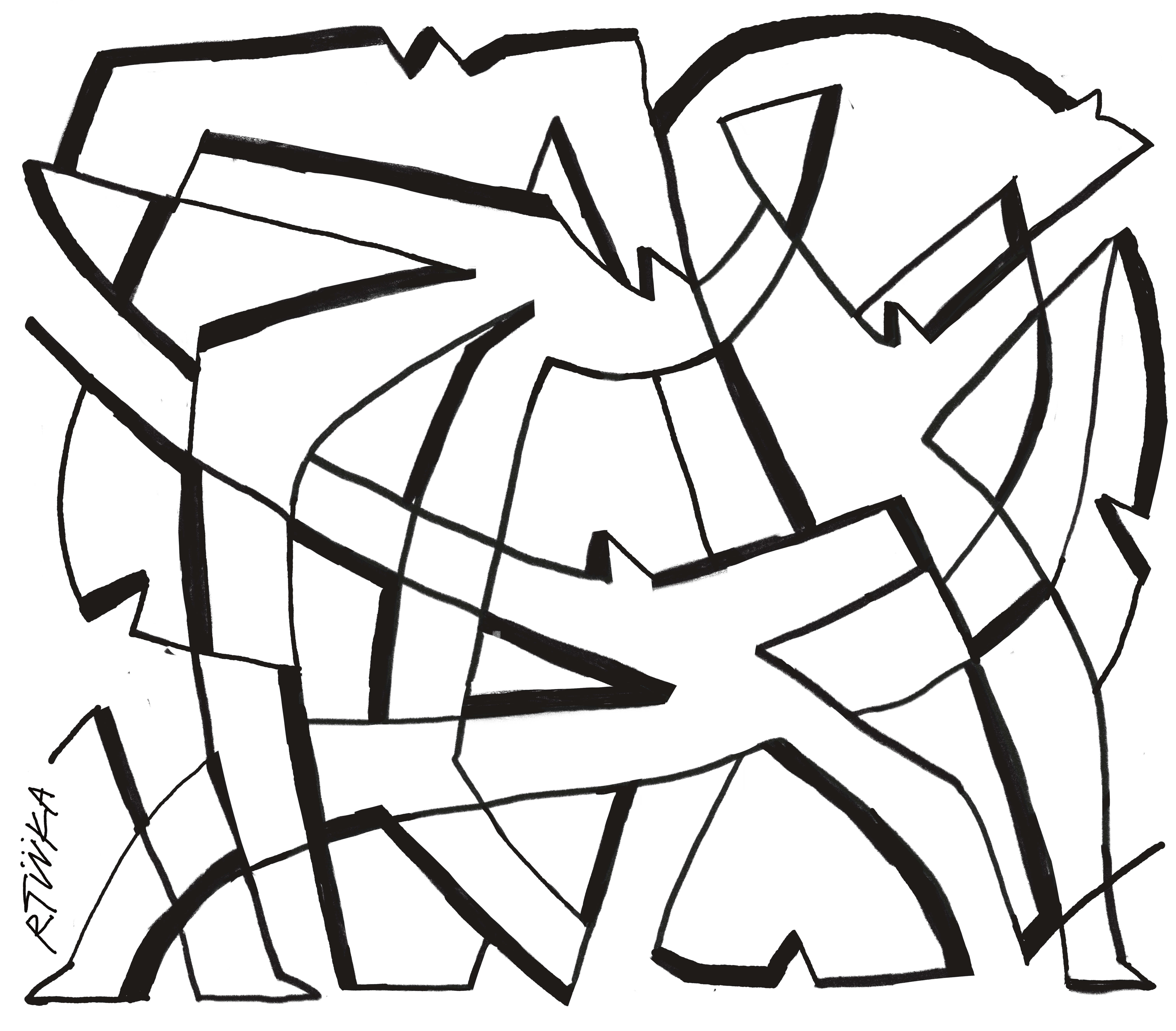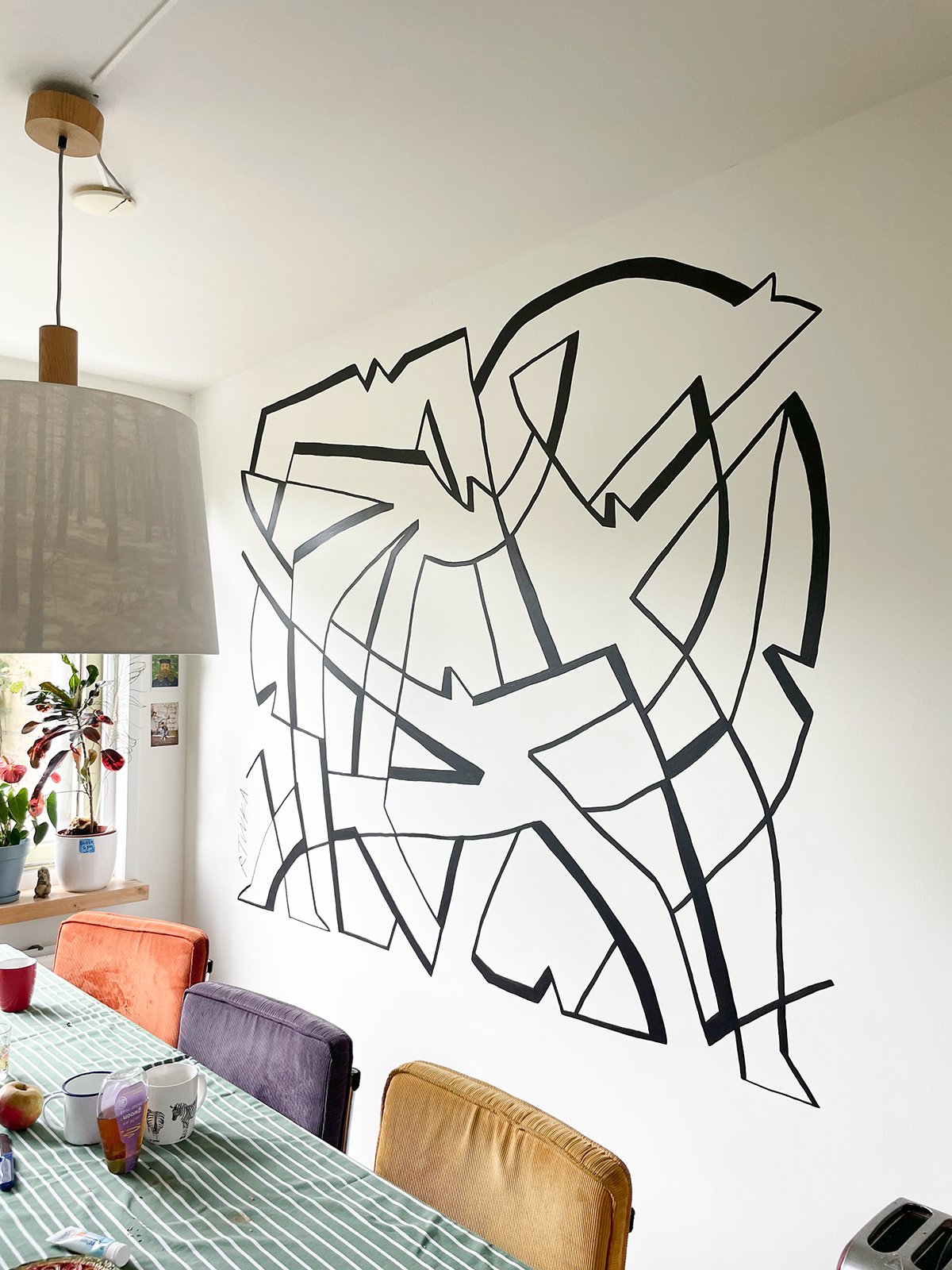Future(s) of Engineering Biology
Client
University of Bristol, https://engbio-cdt.org/projects/rri/
Brief
Collaborate with PhD researchers from the Universities of Bristol and Oxford, along with sixth-form students from Bristol Cathedral Choir School, to explore the future impacts of Engineering Biology through speculative artworks.
Using games and creative prompts across two workshops, participants imagined what life in Bristol could look like 20, 50, or even 100 years from now, and how innovations in bioengineering might transform healthcare, the environment, and everyday life. The games also helped researchers explain their work without jargon, making complex ideas more accessible.
From the workshop materials, I created eight “materials from the future” that were exhibited at the FUTURES Festival (We The Curious) to spark dialogue between researchers, young people, and the public about the societal choices and ethical questions shaping our future with Engineering Biology.
Photography by Giulia Spadafora
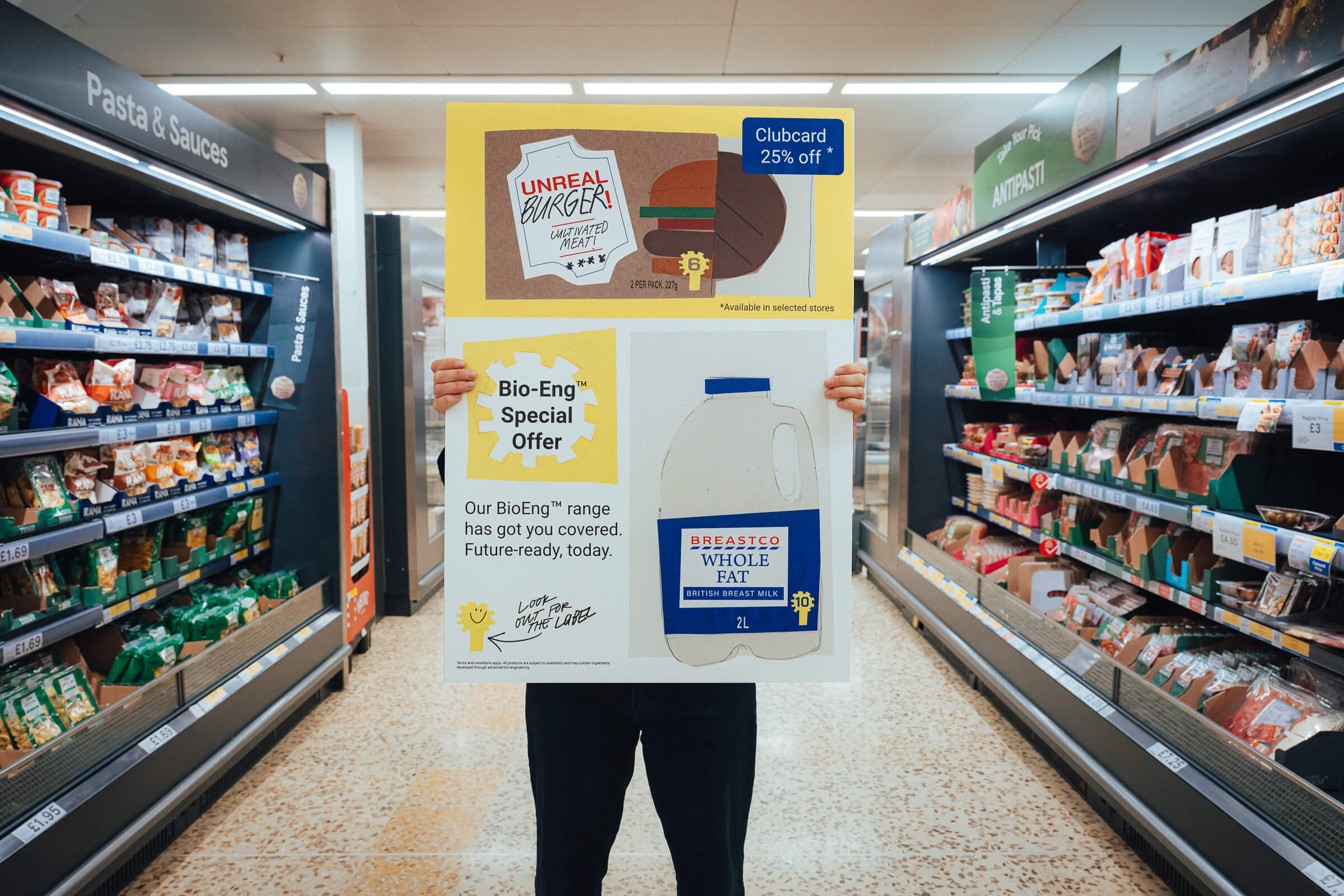
Bio-engineered Food
This supermarket advert imagines a near future where bioengineered foods like the “Unreal Burger” (cultivated meat) and lab-grown human milk are everyday items, branded under “Bio-Eng™” and sold with special offers. Drawing on real advances in cellular agriculture and synthetic biology, this vision reflects work by companies like Vow Foods, Good Meat, and Biomilq, who are developing sustainable alternatives to traditional meat and dairy. These innovations promise to reduce animal suffering, free up farmland for rewilding, and cut greenhouse gas emissions-potentially transforming our food system for the better. Yet such a shift may also disrupt farming livelihoods and challenge cultural connections to agriculture. As lab-grown foods enter mainstream markets, we’re asked to consider: does producing food in bioreactors bring us closer to nature by letting ecosystems recover, or further from it by breaking with traditional ways of life?
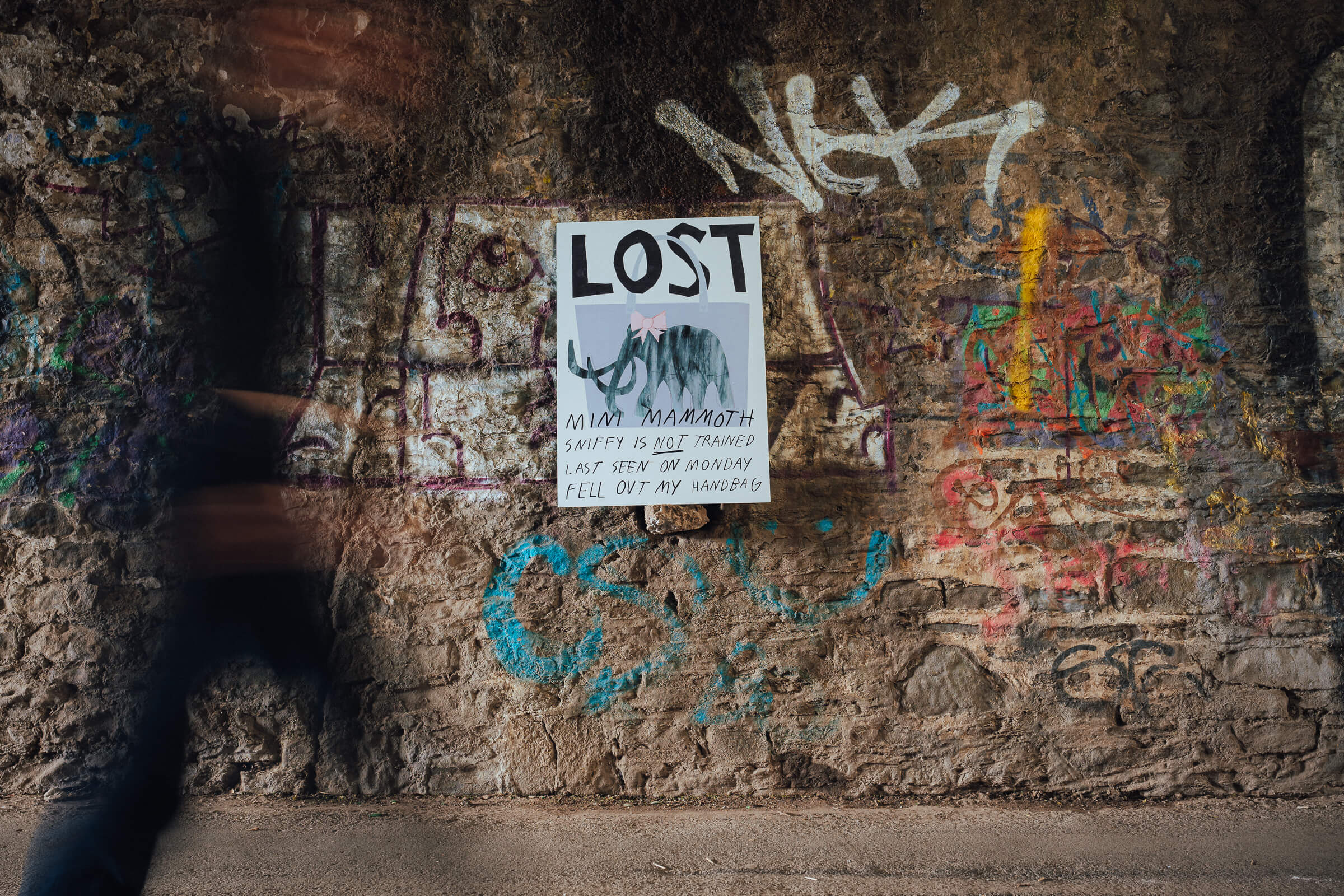
De-extinction
This lost poster for “Sniffy,” a pet mini Woolly Mammoth missing in Bristol in 2085, imagines a future where genetic engineering has enabled the return of extinct species. Following successful reintroductions of full-sized mammoths to arctic regions to help slow permafrost melting, bioengineers created dwarf versions as companions. While de-extinction efforts are underway today - such as bringing back traits from mammoths, dire wolves, and dodos - significant challenges remain, including whether these species can thrive in drastically changed habitats or become mere curiosities. Beyond the excitement of “cool” creatures, these projects raise deeper questions about the value of biodiversity.
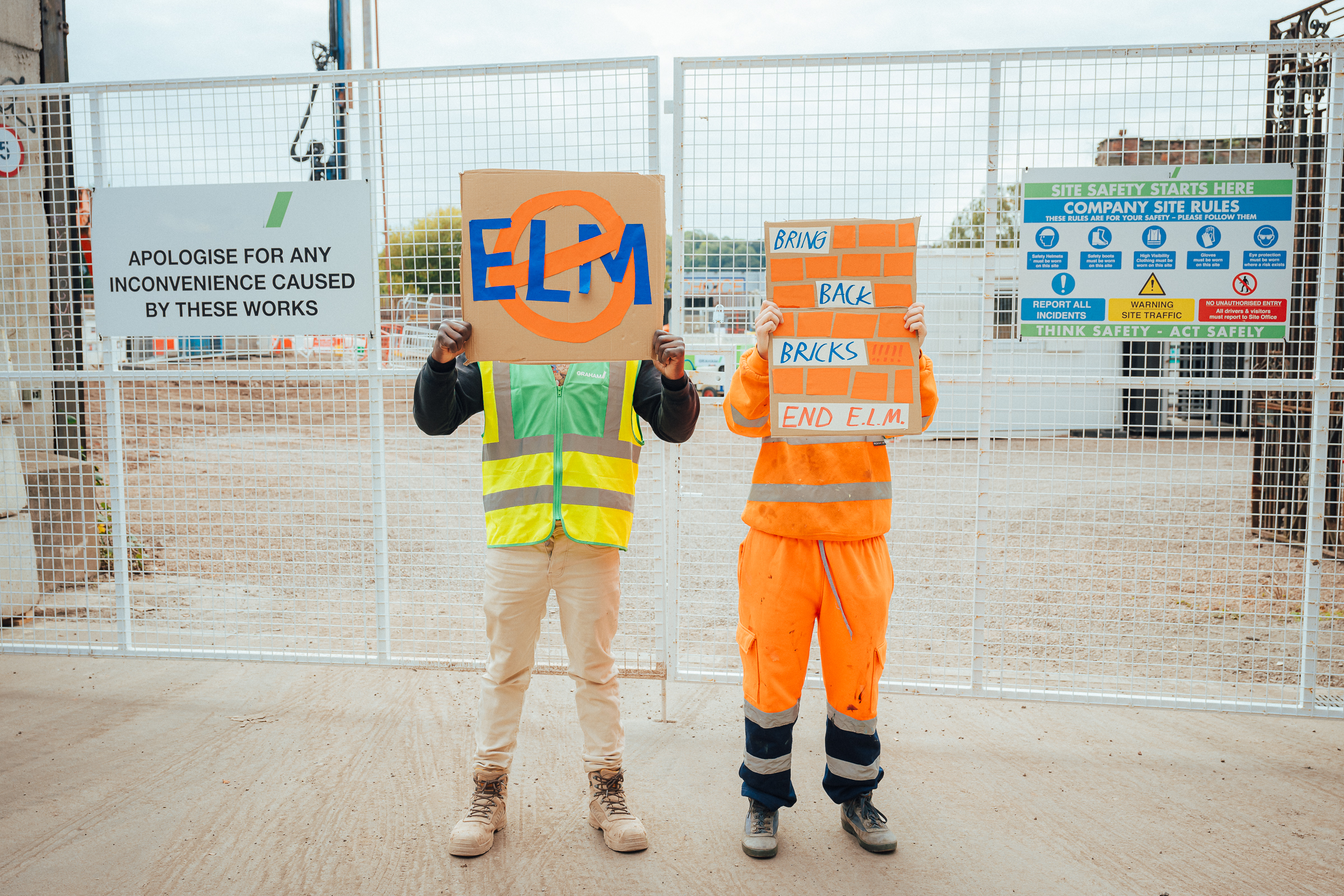 Engineered Living Materials
Engineered Living MaterialsThese protest posters from the Bristol Riots in 2057 highlights tensions as engineered living materials replace traditional bricks, boosting sustainability and productivity but causing widespread unemployment among human construction workers. Innovations like cyanobacteria-based bricks, mycelium composites, bio-cement, and self-healing concretes promise regenerative, carbon-sequestering cities built with living materials. While these advances offer enormous environmental benefits, they raise important social questions about the future of work and fairness.
Would you feel safe living in a house made from self-healing, living materials if no humans had been involved in building it?
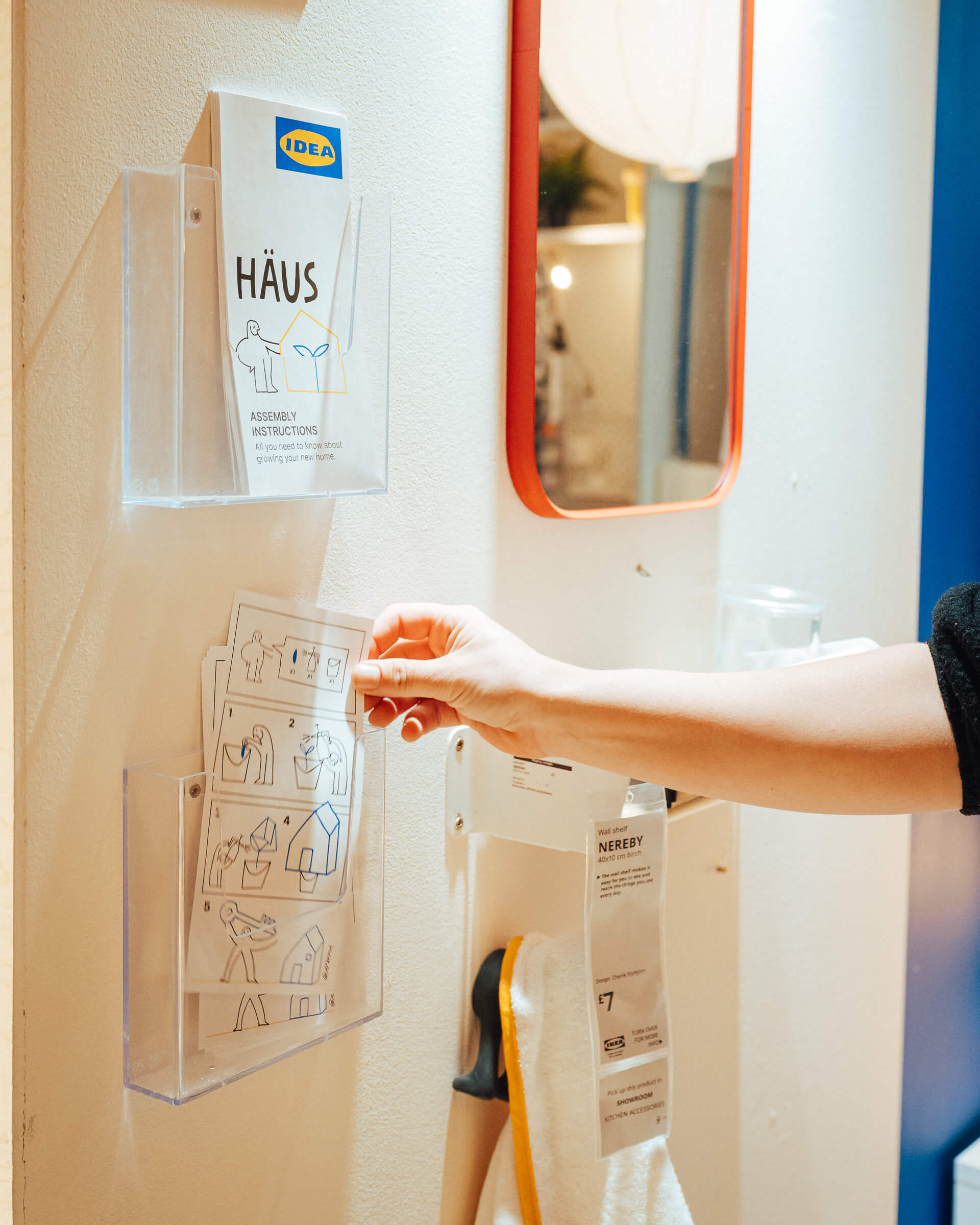
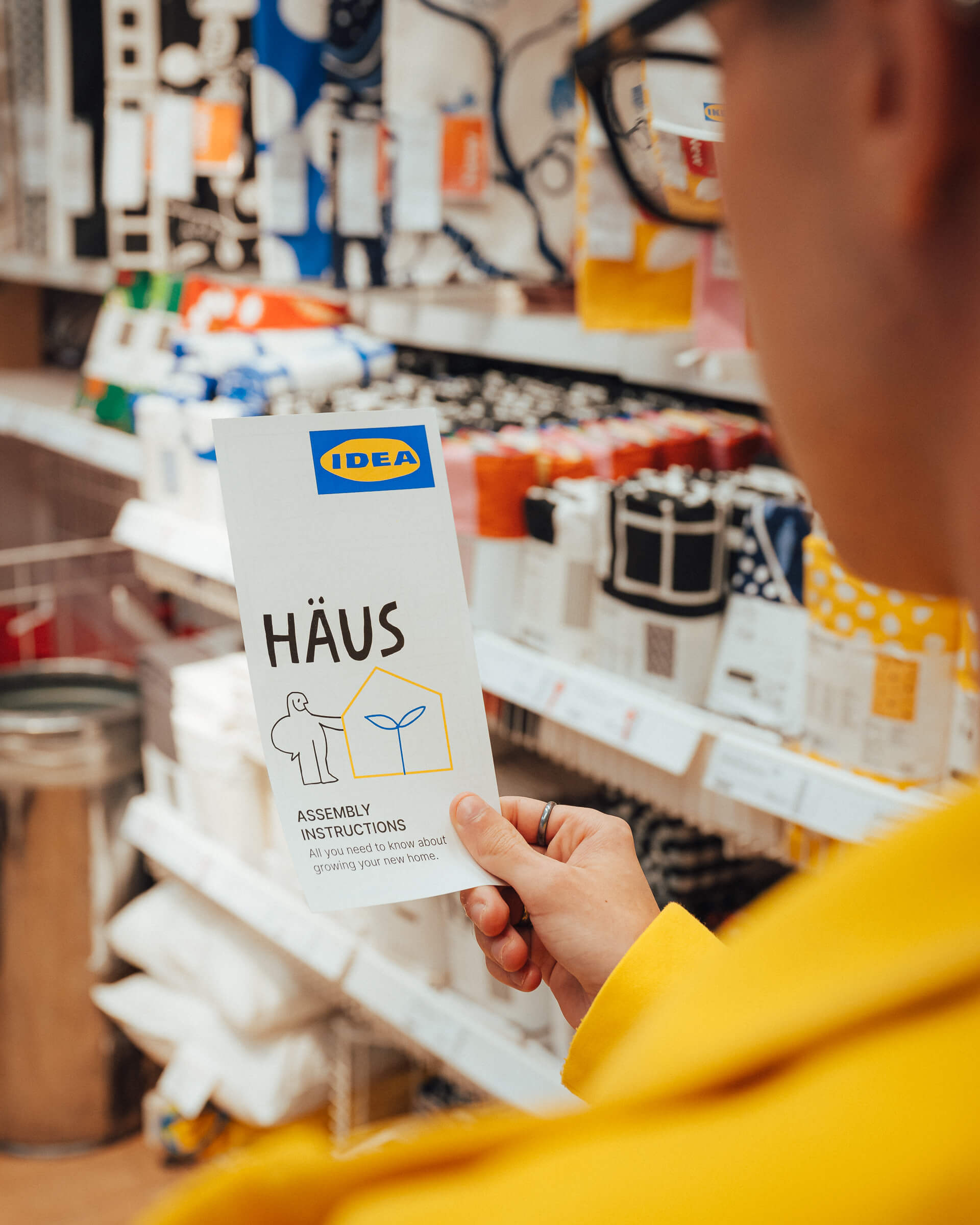
Grow Your Own Home
This instructional booklet from 2100 imagines houses grown like plants, inspired by advances in plant engineering and synthetic biology that allow trees to grow into pre-designed architectural forms. Instead of building with cut timber, homes could be alive, self-healing structures shaped by genetically programmed growth patterns - reducing reliance on carbon-intensive materials like cement and steel. Building with living materials could transform cities into forests, restore natural habitats, and increase biodiversity while providing shelter. This vision challenges us to ask: if our homes were alive and growing, would we feel more connected to nature - or less in control of it?
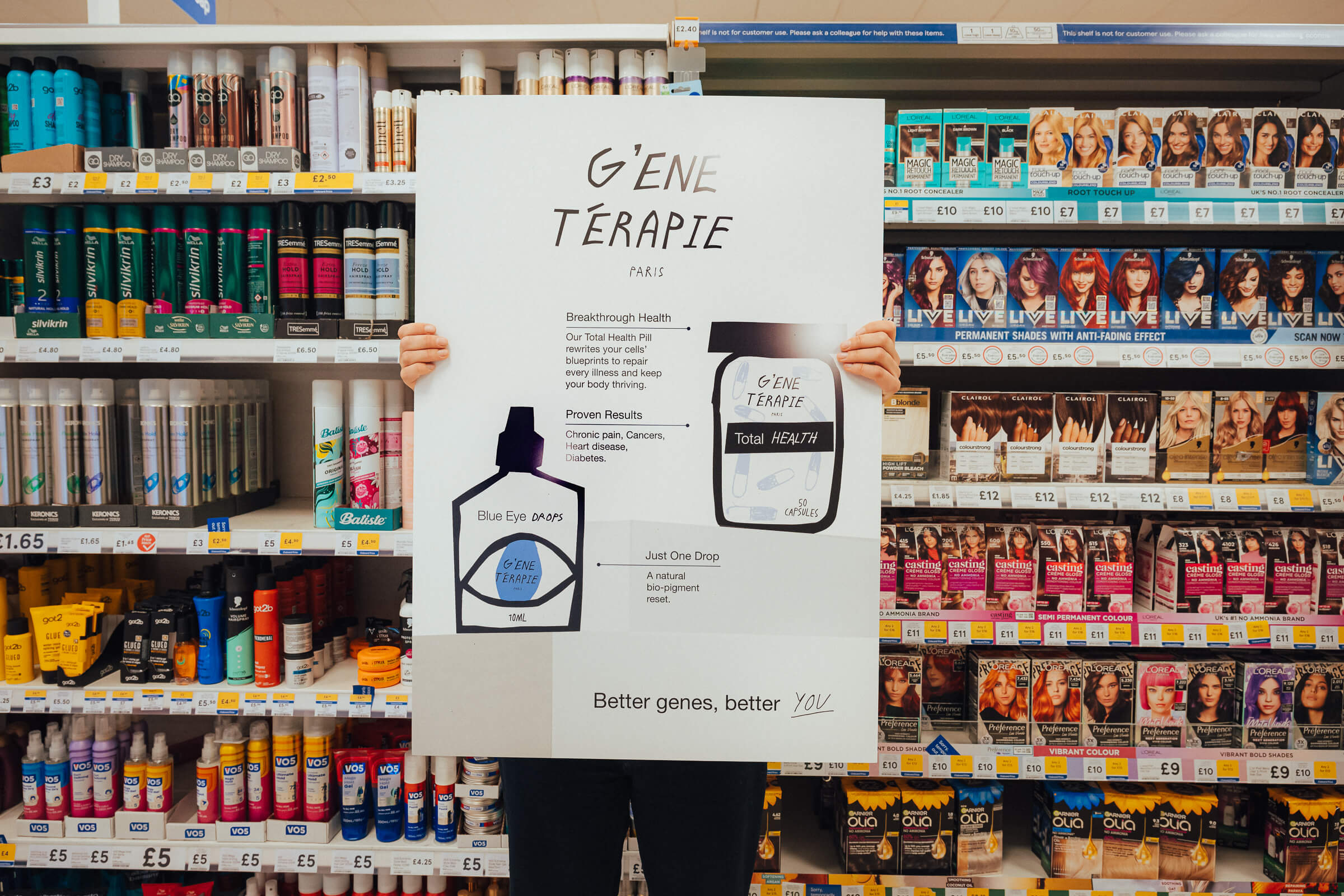
Gene Therapies
This advert envisions a future where gene editing becomes a normalised part of daily life, expanding beyond medical treatments into self-care, beauty, and wellness products. While current gene editin- mostly performed ex vivo with tools like CRISPR - has shown promise in treating diseases like sickle cell anemia, widespread adult gene therapy remains decades away and faces significant scientific, ethical, and societal challenges. Gene editing holds immense medical potential, including curing genetic diseases and possibly impacting ageing, but raises concerns about equity, access, and social pressure to conform. As the technology evolves, we must carefully consider whether these advances will empower personal freedom or reinforce societal expectations. How do we ensure gene editing benefits everyone without deepening divides or limiting our choices?
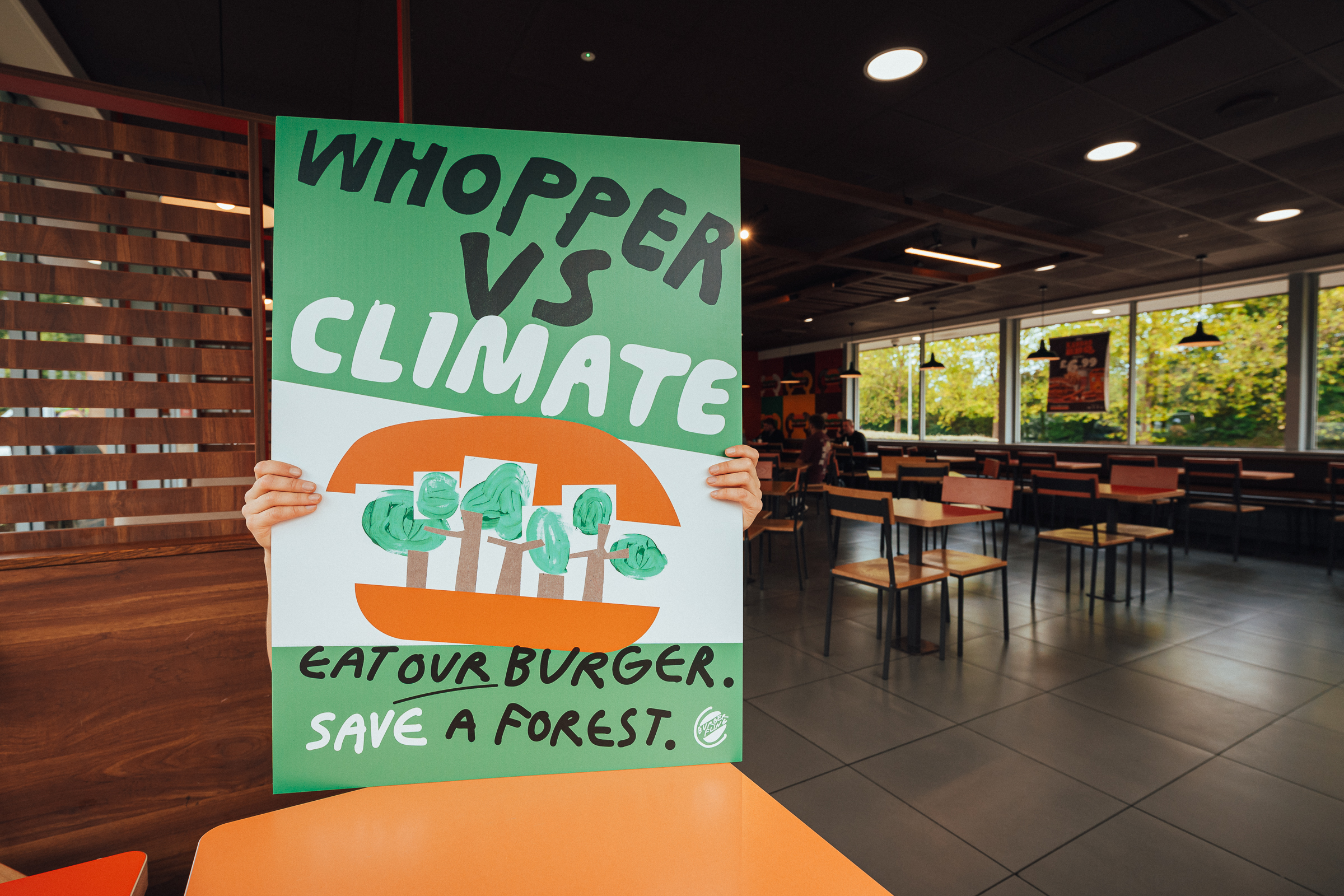
Cultivated Meat
By 2030, cultivated meat - grown in bioreactors without raising livestock - is poised to offer a sustainable alternative to traditional beef, as showcased by the “Whopper vs Climate” campaign. Companies like Vow Food and Meatly are already selling cultivated meat products, which use significantly less land and water, reduce greenhouse gas emissions, and could help restore forests by reducing the need for intensive livestock farming. If costs come down and taste meets expectations, cultivated meat could become a mainstream, climate-friendly choice that also offers improved nutrition.
Would you be willing to try a Cultivated Whopper?
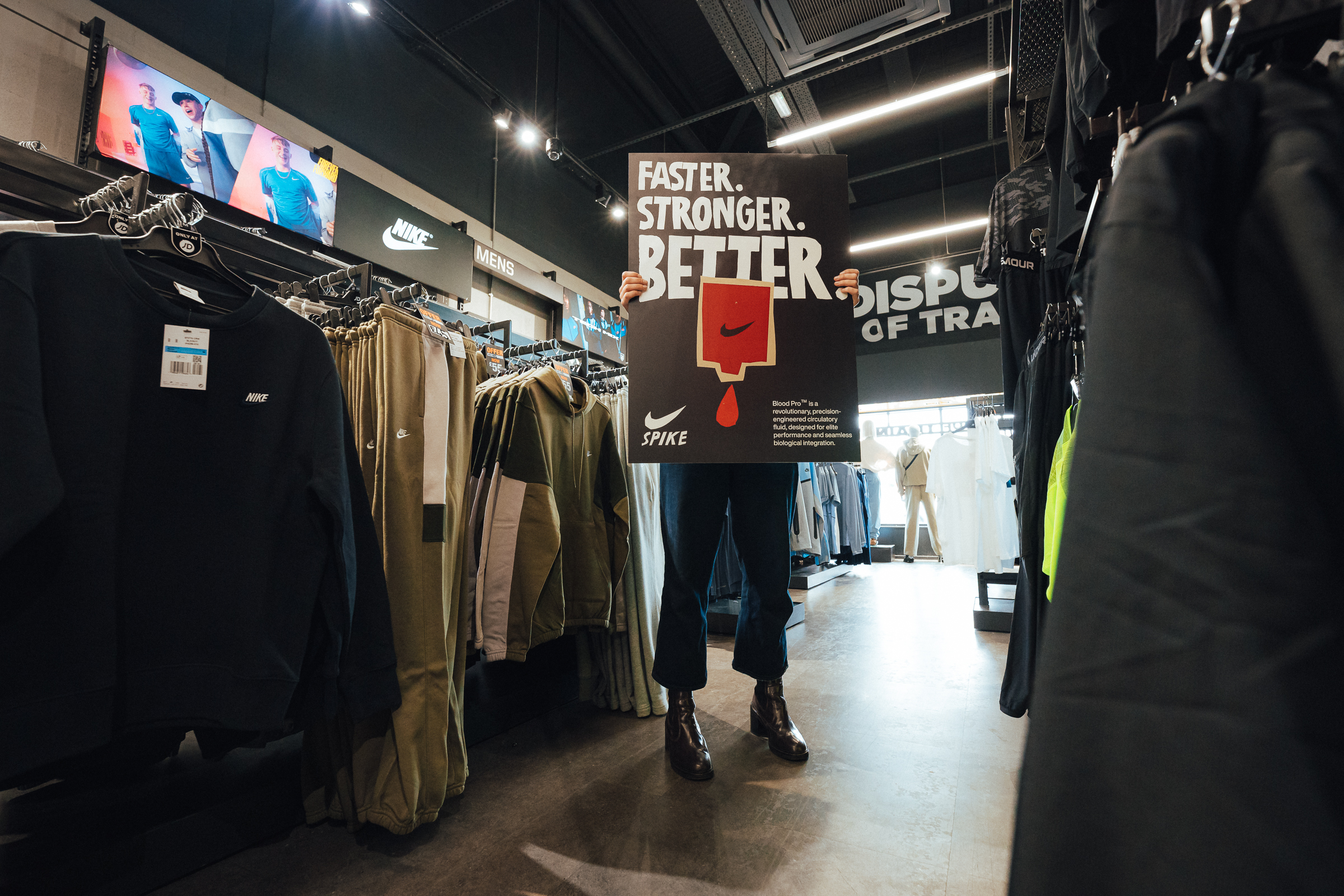 Bio-enhanced Blood
Bio-enhanced Blood This advert for "Blood Pro" imagines a future where biotechnology enhances the body far beyond natural limits - upgrading red blood cells to boost speed, endurance, and recovery, with no harmful side effects.
While marketed to athletes, such technology could also appeal to military organisations, hinting at origins in defence research like DARPA’s “Smart-Red Blood Cell” programme. Real-world advances, including lab-grown blood and synthetic oxygen carriers, are already transforming transfusion medicine and drug delivery. As these innovations blur the line between healing and enhancement, they raise urgent ethical questions: Who gets access? Should enhancements like Blood Pro be regulated, and would users still qualify for fair competition? As we gain more control over our biology, we must carefully consider the kind of future we want to build.
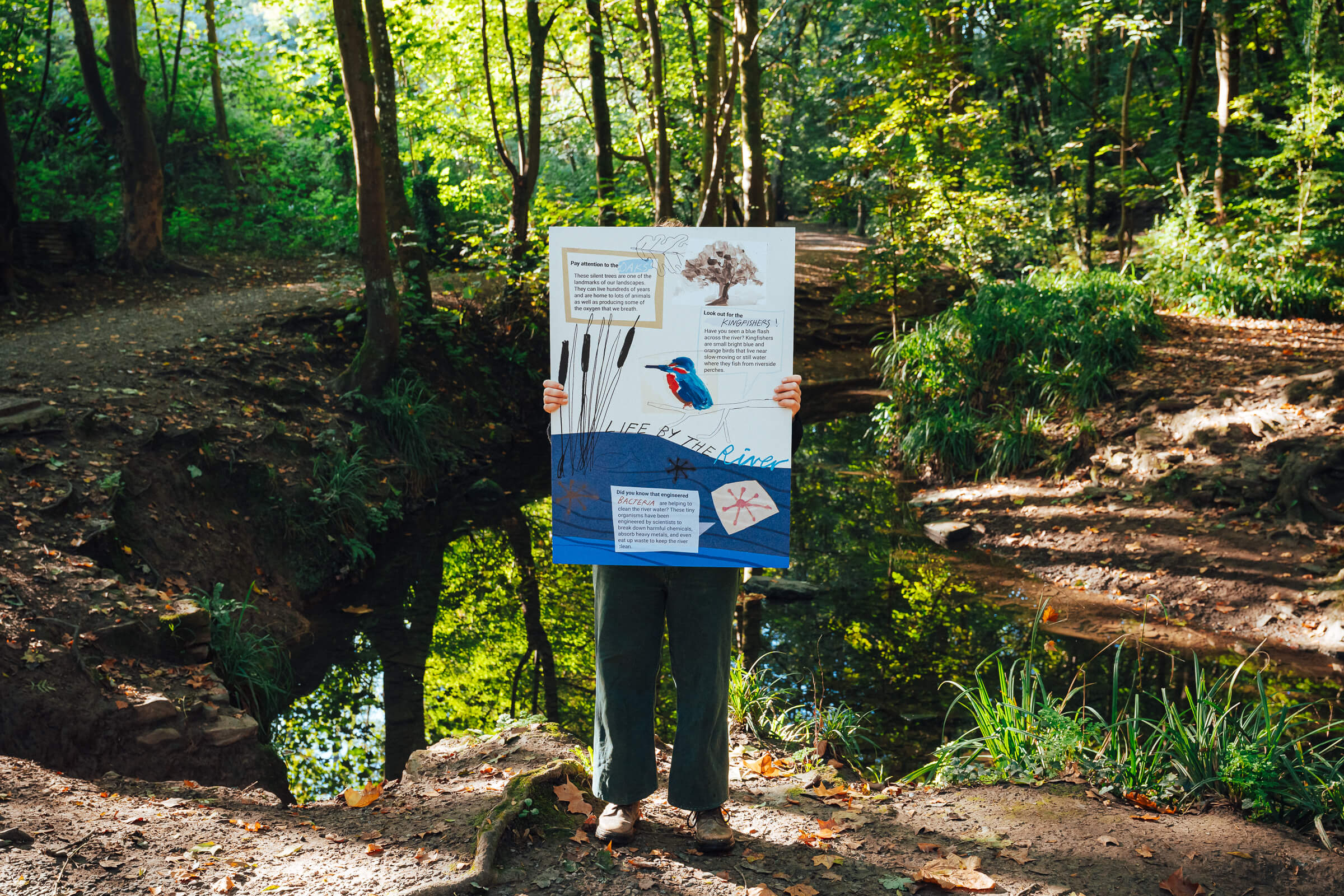 Cleaning our Rivers with Living Filters
Cleaning our Rivers with Living FiltersSet beside a quiet river, this poster imagines a future where engineered microbes live alongside plants and animals to keep waterways clean. Star-shaped symbols in the water represent bacteria designed to digest pollutants, while the return of species like kingfishers signals restored ecosystems. Inspired by real advances in engineering biology, researchers are now developing microbial communities that break down dyes, plastics, and toxins, and sense pollution using colour or light. These microbes can be safely contained in gels, reactors, or constructed wetlands.
This vision, set in the mid-2040s, offers hope for low-energy, chemical-free water treatment that supports biodiversity. But it also raises concerns about unintended ecological impacts, the spread of resistant bacteria, and the risk of enabling continued pollution. To pursue this path responsibly, we need strong safeguards, public involvement, and upstream solutions. If we can heal rivers with engineered life, where do we draw the line between protecting nature and redesigning it—and who gets to decide?
Self-destruction Zine workshop
Client
University of Warwick, Sociology Department
Brief
Facilitate a creative workshop for 12 participants as part of the Perspectives on Self-Destruction seminar series. The aim was to help participants connect and reflect on the topic through creative storytelling and zine-making (below is my zine i made in preparation). I used different transparency papers as a way to make certain pages faded, a visual way to explore presence, absence, and visibility.
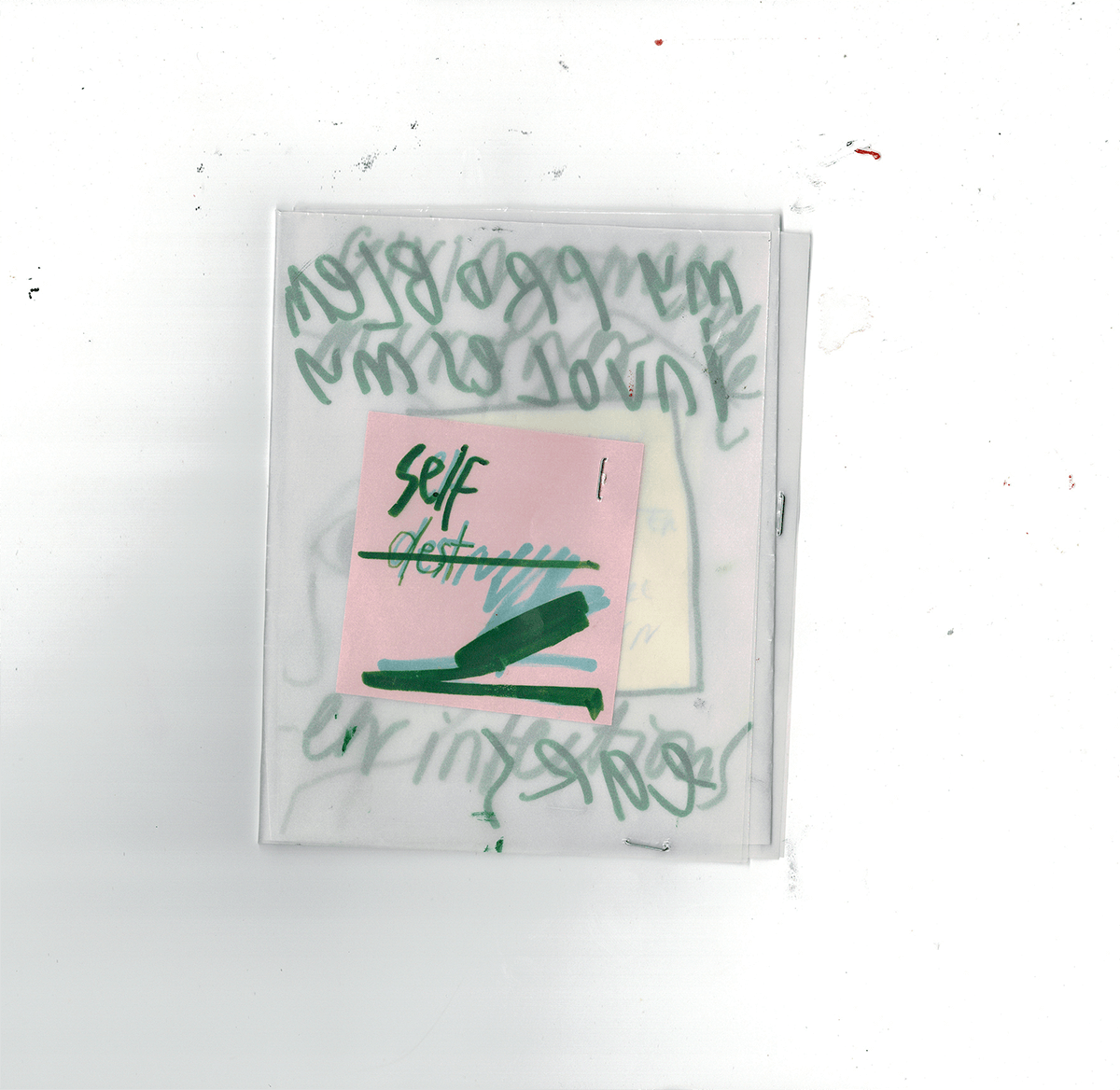
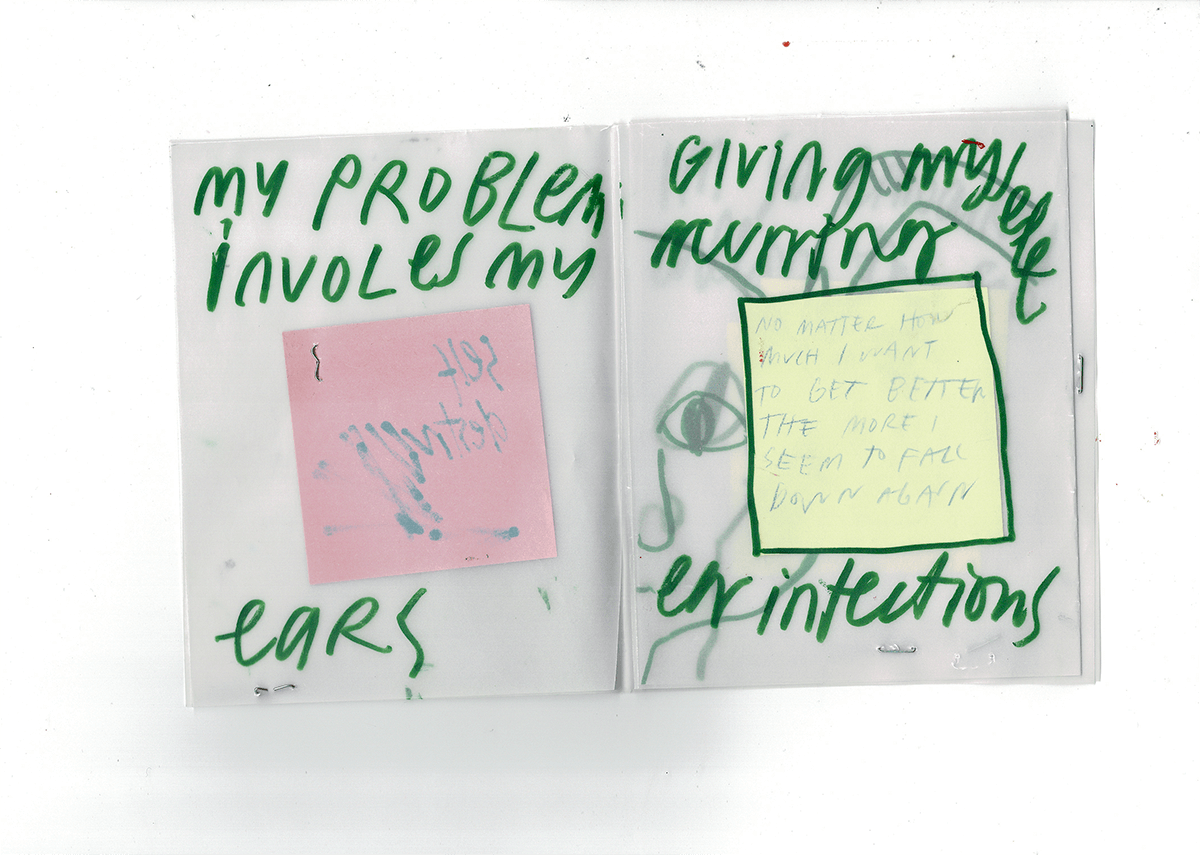
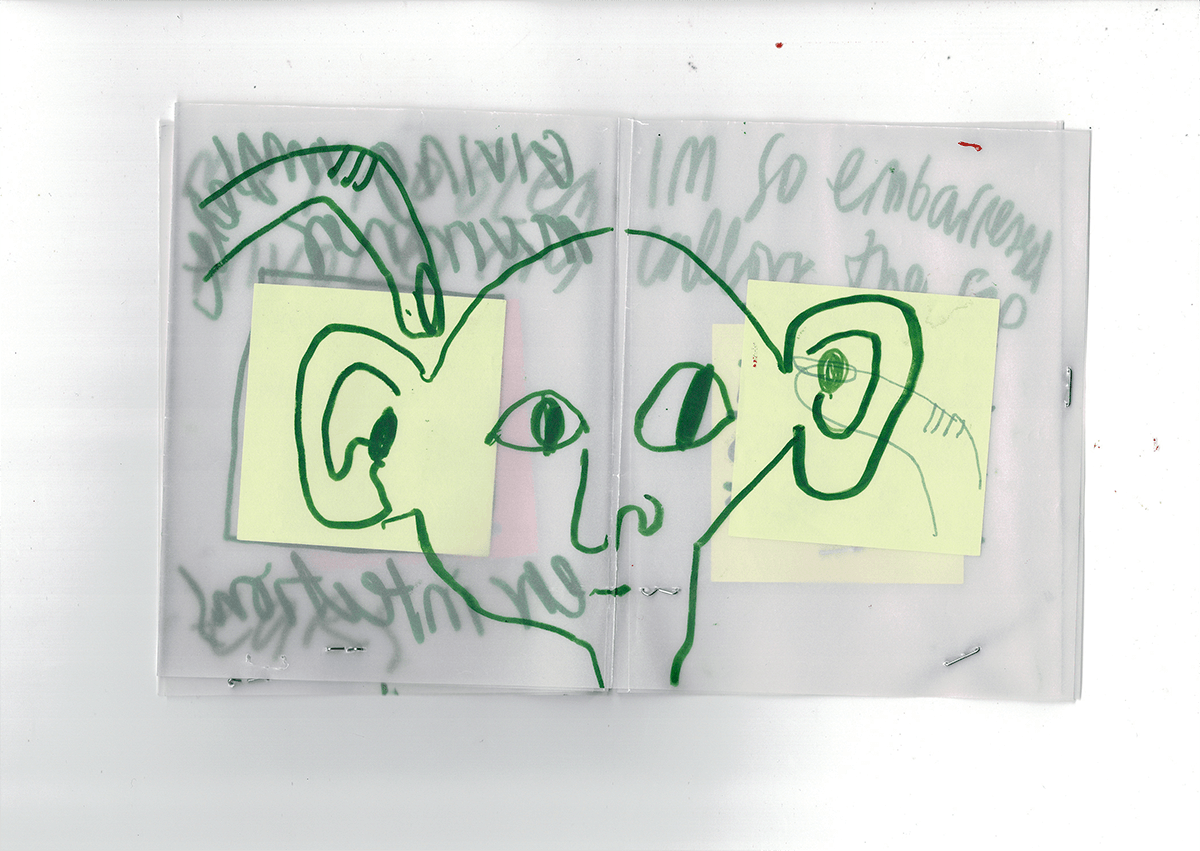
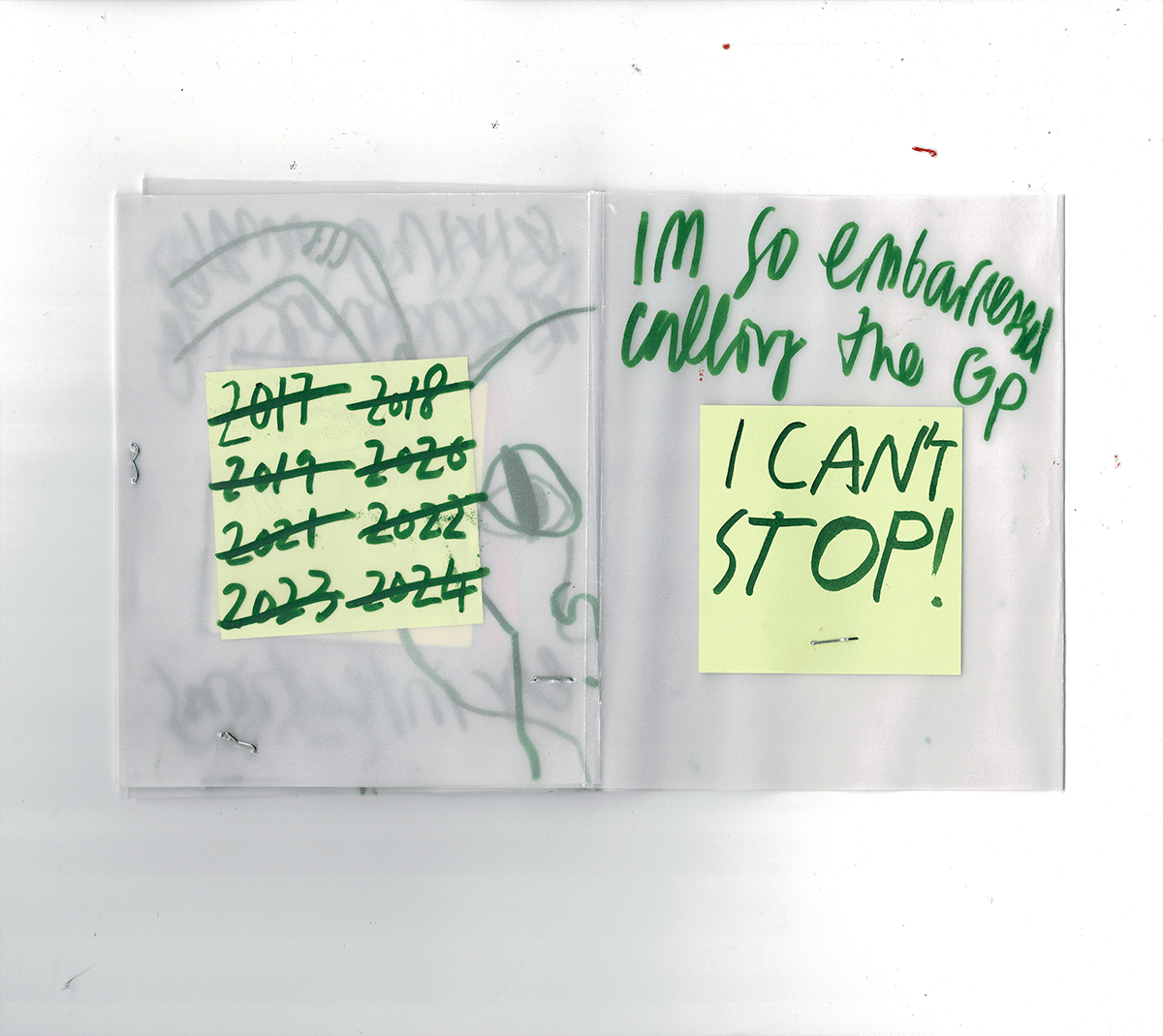
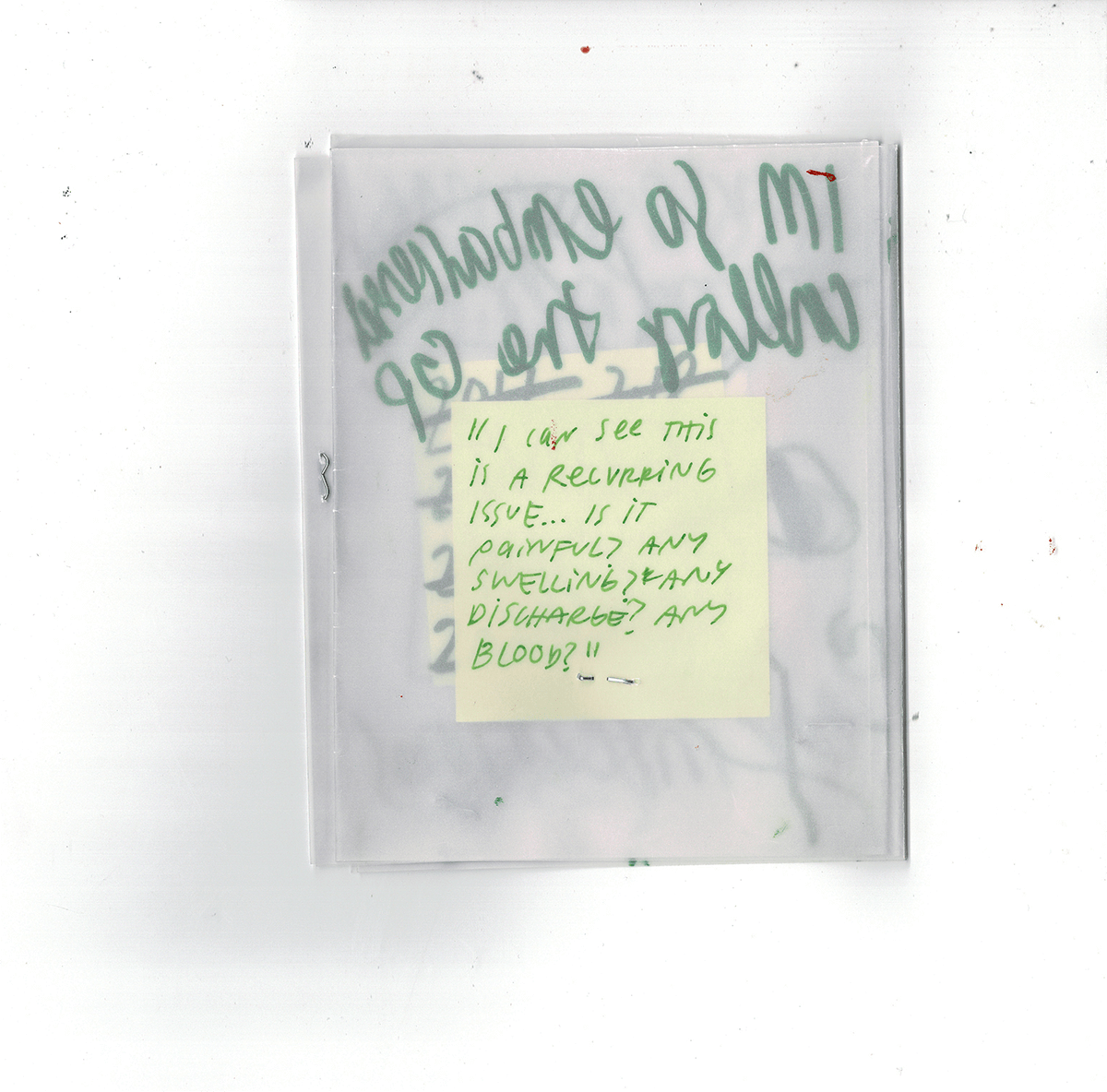
Community Mural Project
, Client
Sovereign Network Group
Brief
Having created a DIY mural festival in Brislington, I got to know the local councillor who introduced me to a housing group looking to work with an artist.
They wanted to design a mural that explores the idea of “home” as a foundation for stability, growth, and community. To go about making this, I put together a workshop in Brislington, where residents aged 5–75 responded creatively to prompts such as “What do you love about your community?”
Using their artwork as a reference, I created a design that could be painted over two days at the BS4 Arts Trail. With the help of 20 community volunteer painters, the mural was completed by Bristol Mural Collective.
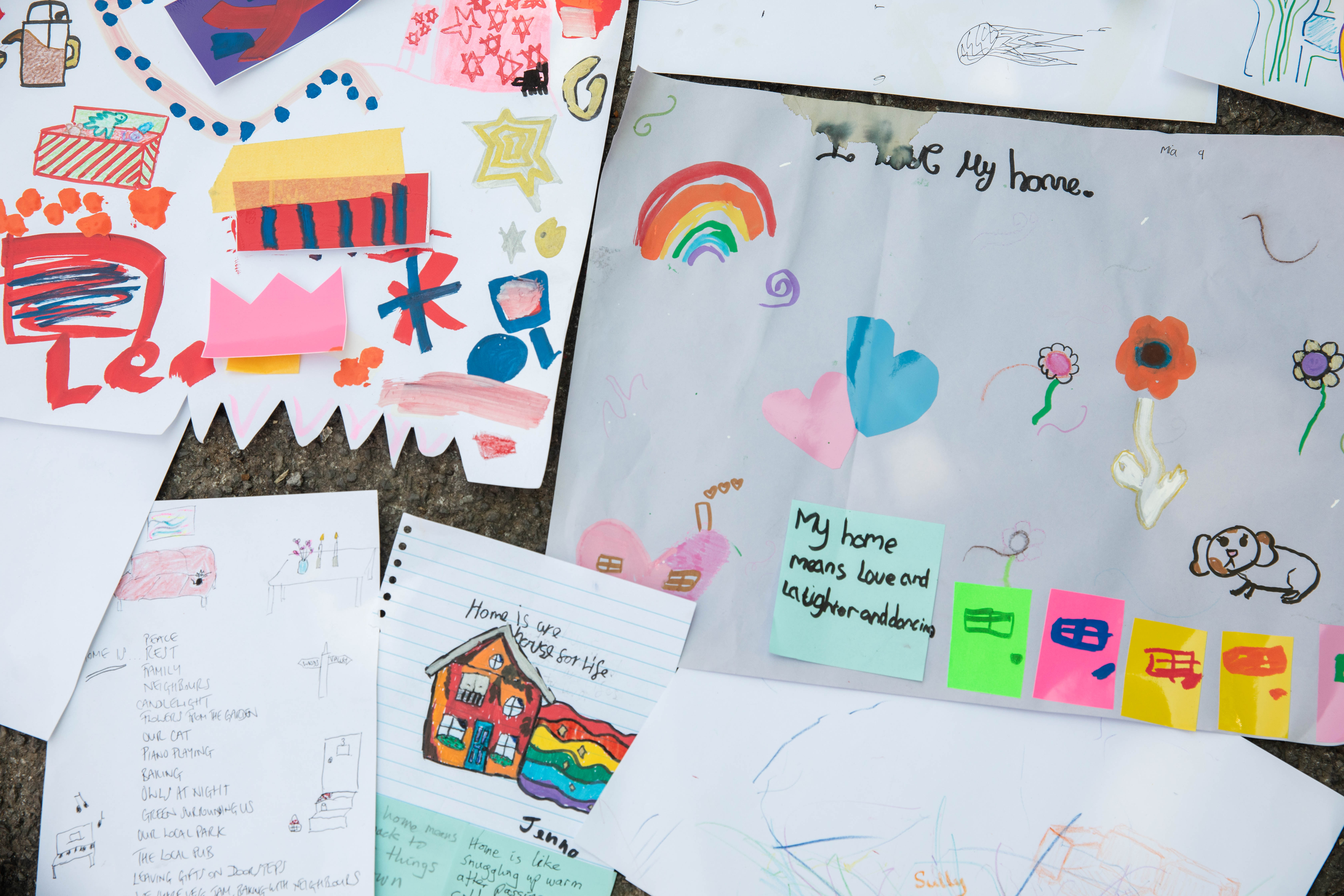
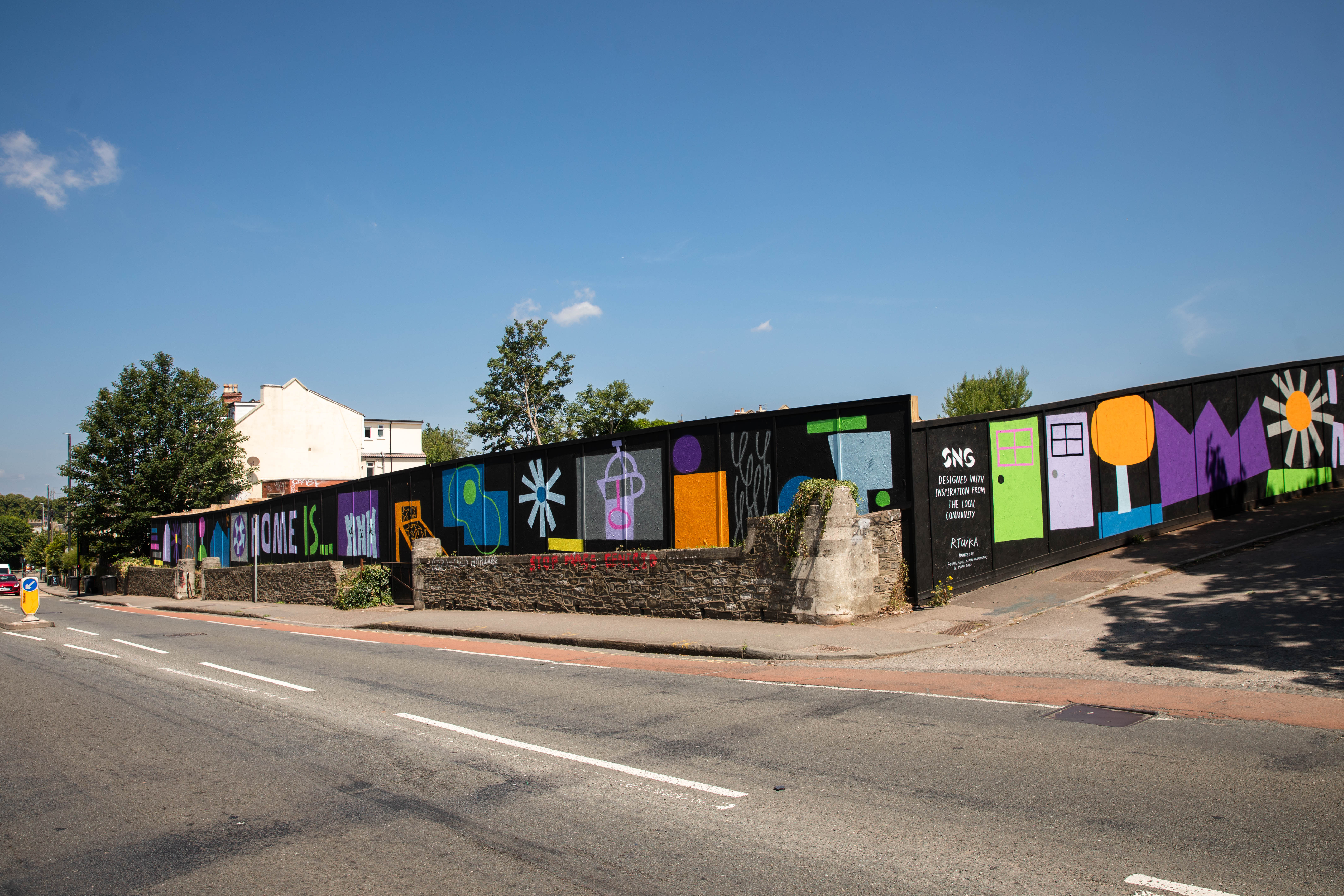
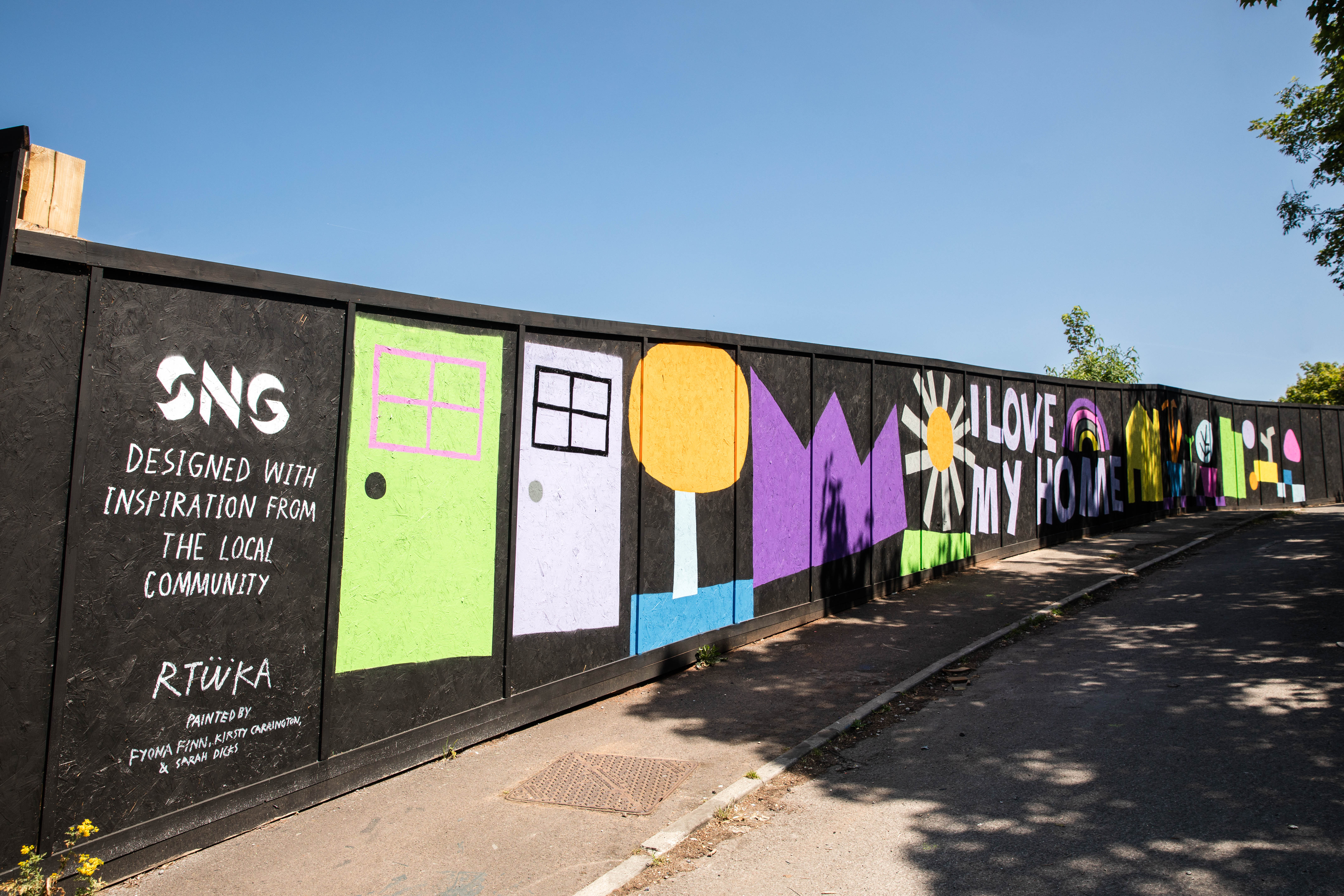
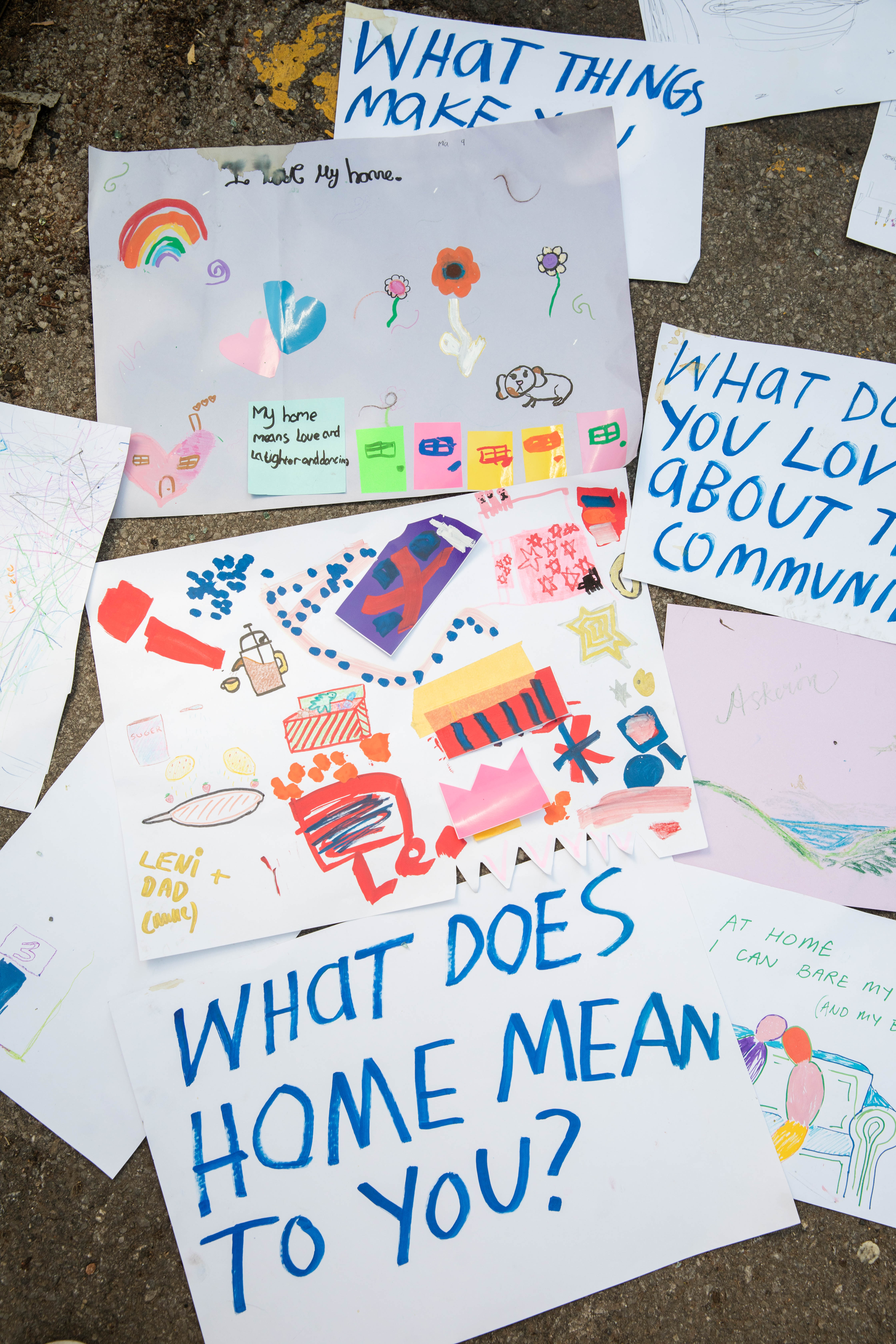
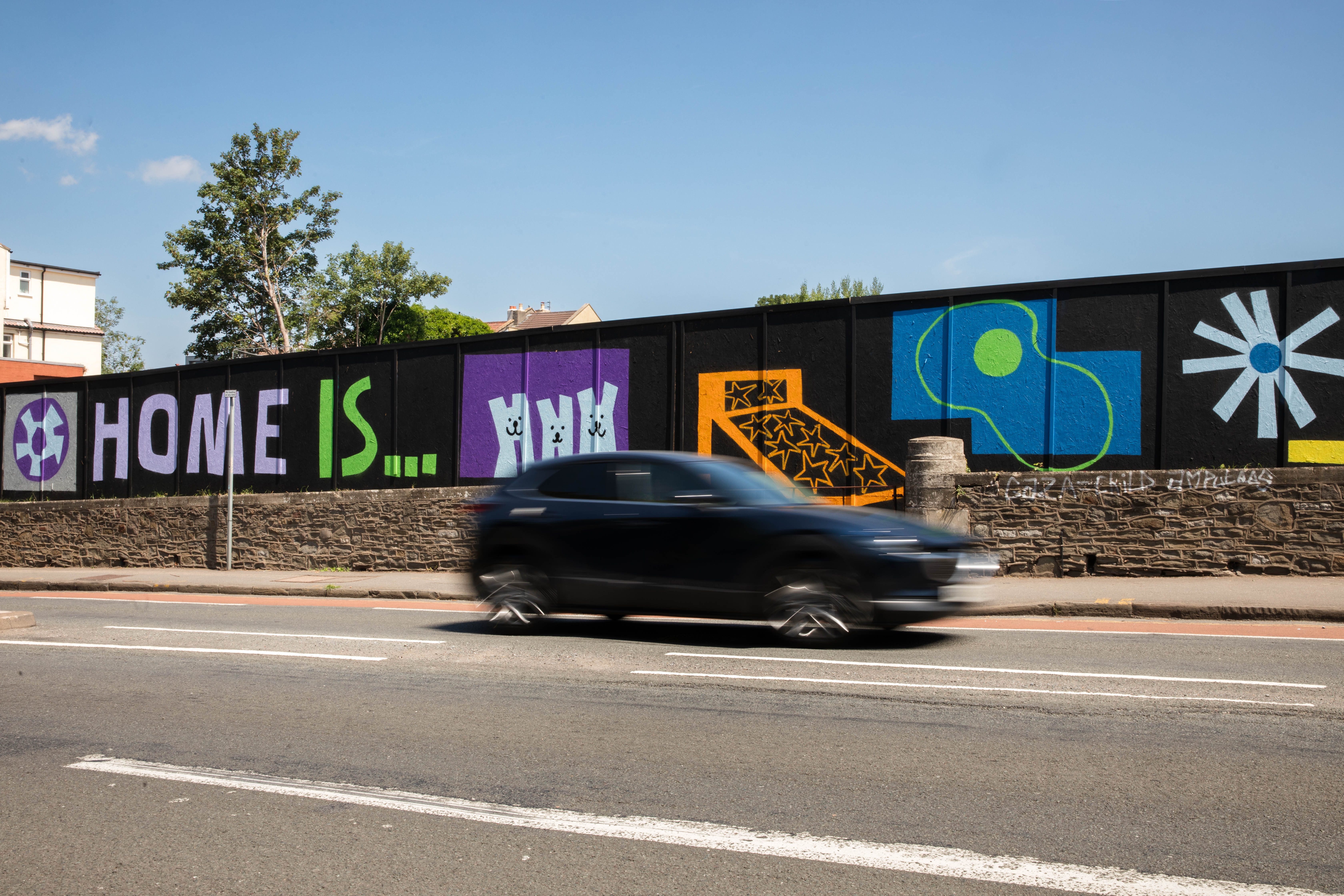
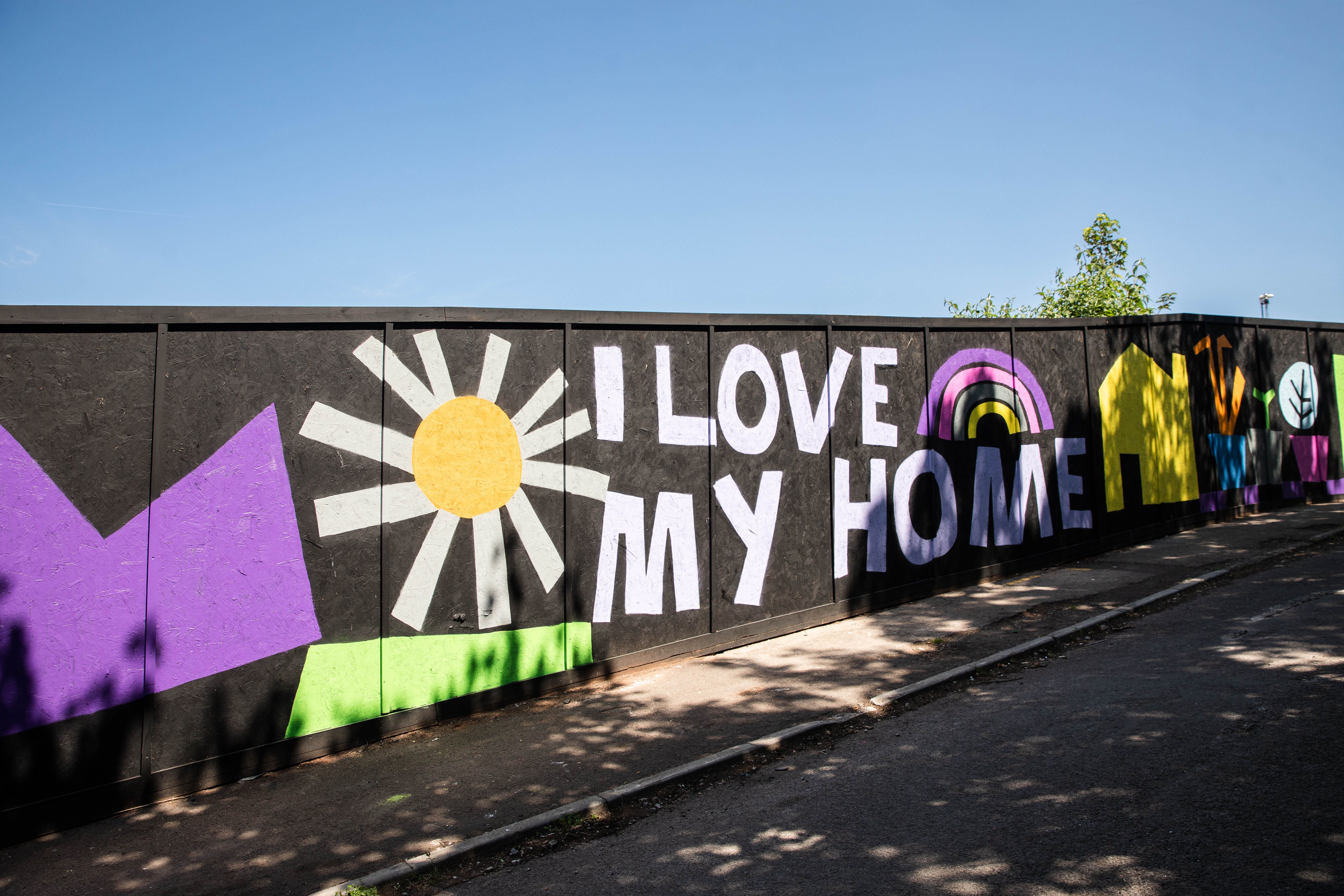
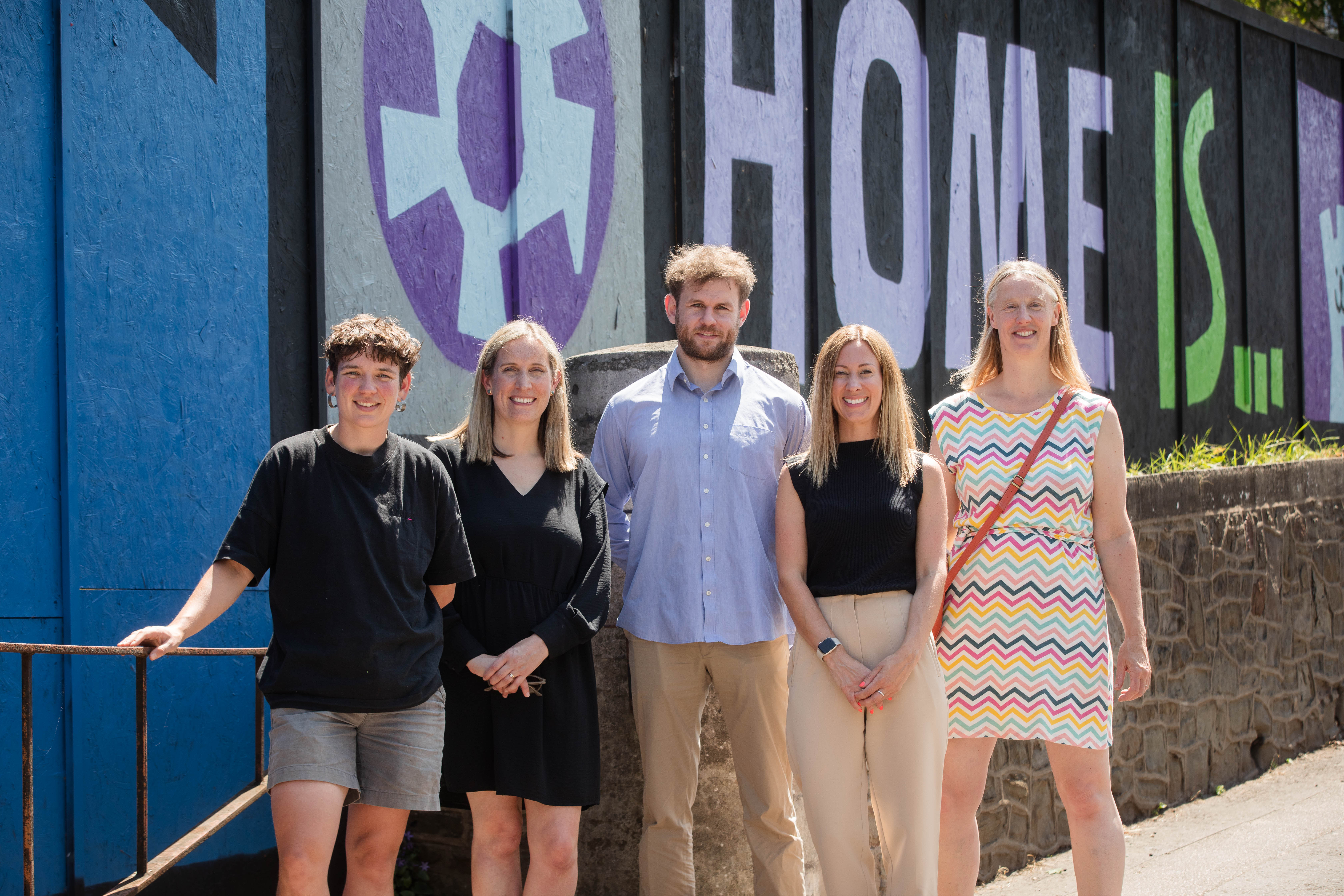
What Road Signs Teach Us
Personal Project
Road signs have become a bit of a fascination for me. For me it’s something about the simplicity and functionalty of the design that I love, and how every country has its own unique visual language. This zine looks at the unlikely connection between UK road signage and some lessons I learnt by falling in love.

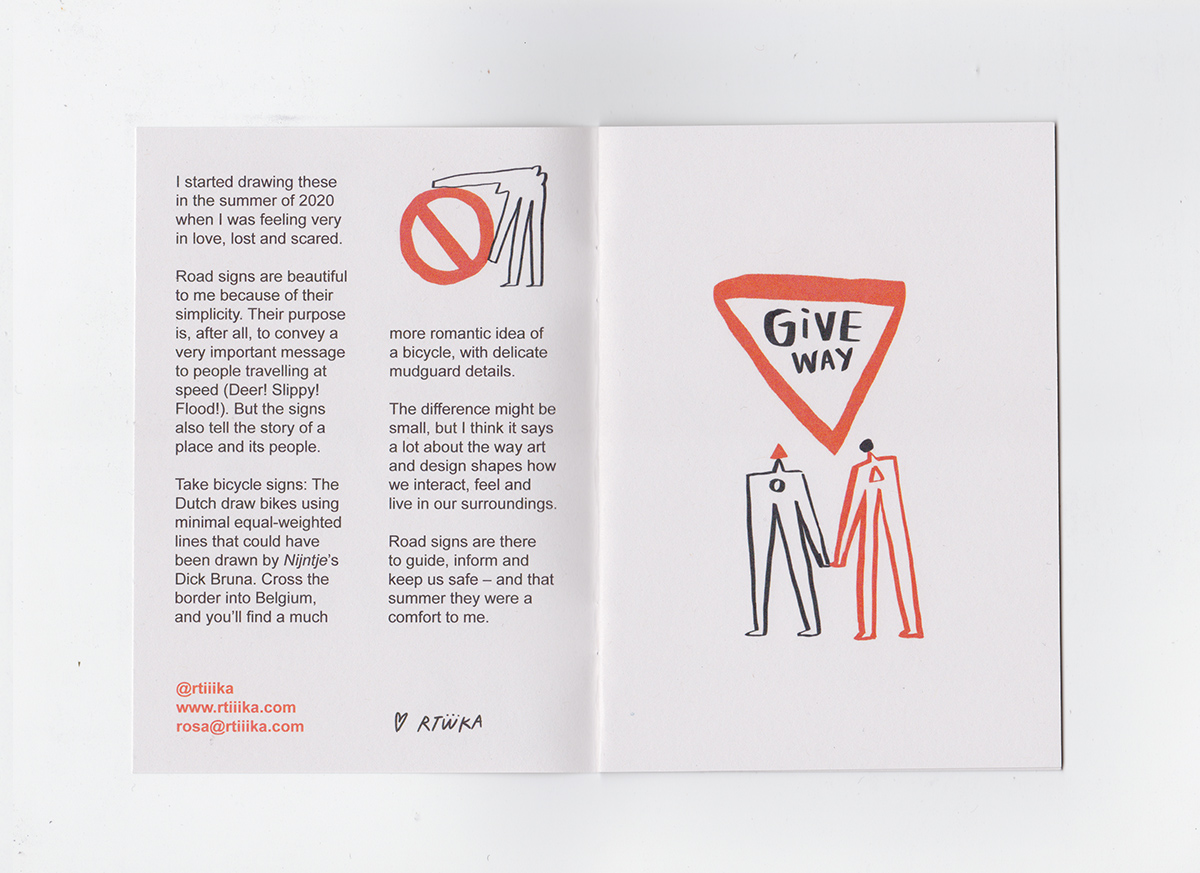


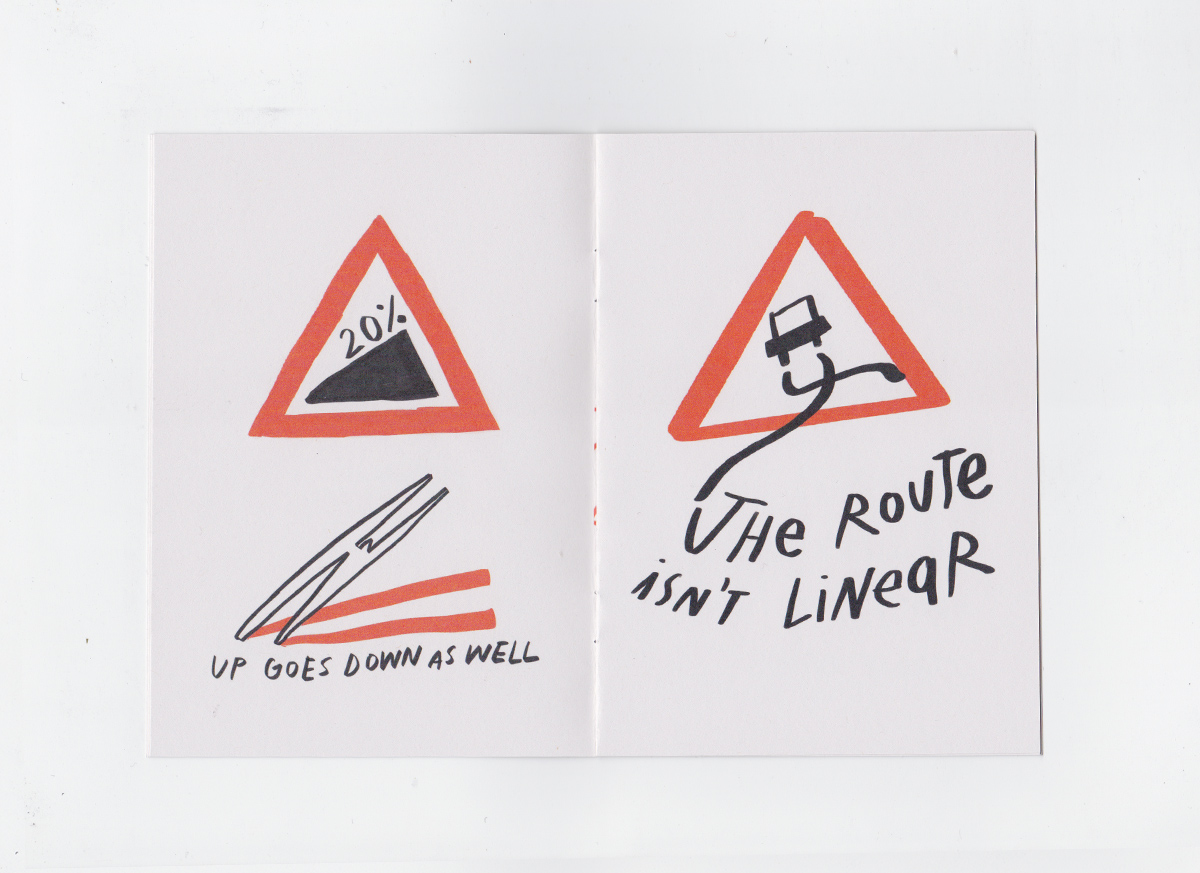
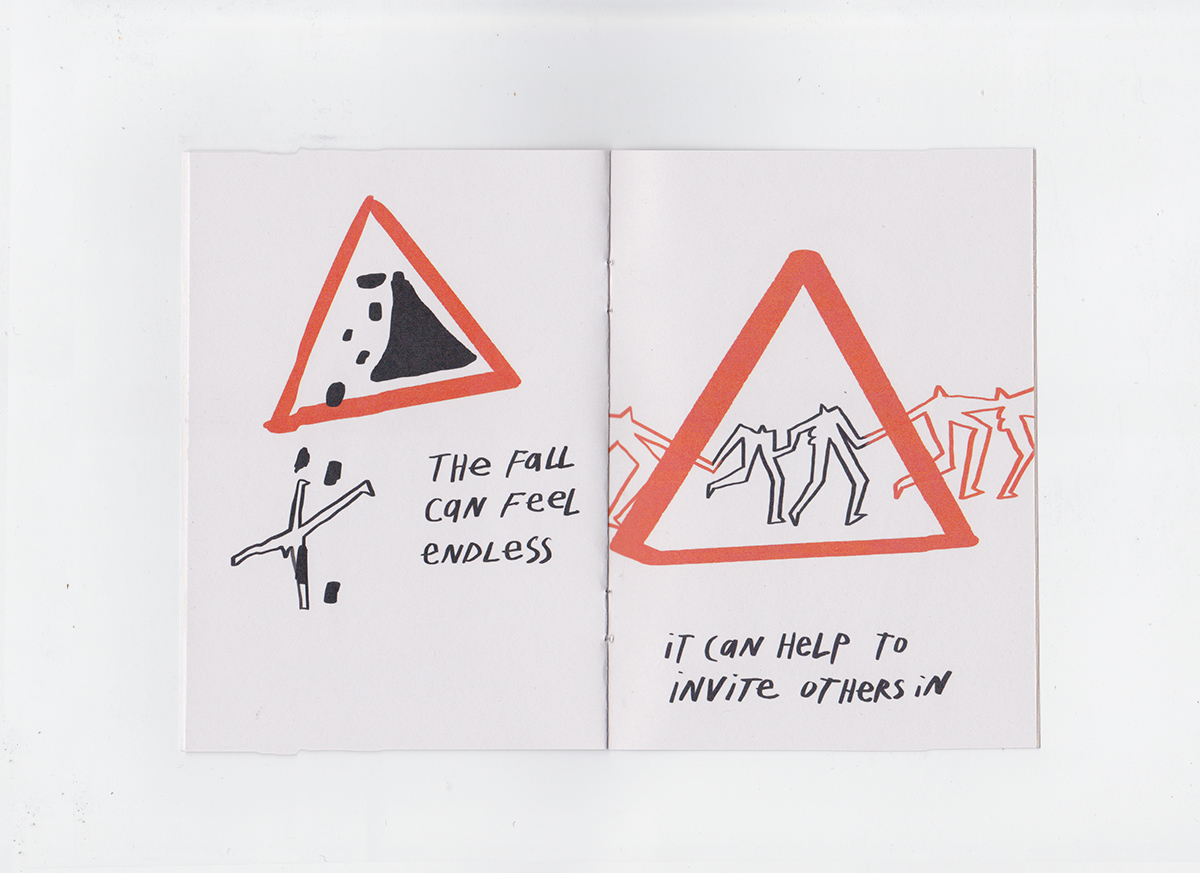

Rainbow Families
Client
Private Commission
Brief
Create a black and white mural for a kitchen and living space in Utrecht. The line-based design should feature interacting figures that speak to the rainbow family experience.
